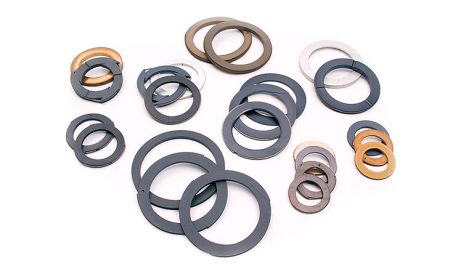Are you ready to tackle the depths of underground tank inspections?
Navigating through this complex process can be daunting, but fear not! By following the best practices and procedures, you will become a pro in no time.
From implementing safety measures to documenting inspection records, this guide will provide you with the essential information needed to conduct thorough and efficient inspections.
Whether you’re a seasoned professional or a newbie in the field, these tips and tricks will help you navigate the underground world of tank inspections with confidence.
So, grab your gear and get ready to delve into the depths of underground tank inspections like never before!
Key Takeaways
– Use appropriate safety equipment and undergo regular training on safety procedures to ensure a safe and effective inspection.
– Conduct thorough tank inspections by visually inspecting the tank’s exterior and interior, checking fuel levels, testing alarms and sensors, and cleaning filters and screens.
– Promptly address common issues such as leaks, corrosion, ventilation problems, and drainage issues to maintain tank integrity.
– Document and maintain inspection records using a standardized checklist and digital record-keeping system for regulatory compliance and tracking tank integrity.
Safety Measures During Tank Inspections
How can you ensure your safety during underground tank inspections?
Safety measures are crucial when dealing with hazardous materials. To protect yourself, it’s essential to use appropriate safety equipment. Personal protective equipment (PPE) such as gloves, goggles, and respirators should be worn to safeguard against potential risks.
Prior to entering the inspection area, ensure that the atmosphere is tested for harmful gases and vapors. Gas detectors and metering devices are essential tools to detect the presence of hazardous substances.
It’s also important to have emergency response equipment on hand, including fire extinguishers and spill containment materials.
Regular training on safety procedures and protocols is imperative to keep yourself informed and prepared for any unexpected situations that may arise during tank inspections.
Preparing for an Underground Tank Inspection
Before conducting an underground tank inspection, it’s important to regularly and thoroughly check for potential hazards.
To ensure a safe and effective inspection, it’s crucial to follow a pre-inspection checklist and have the necessary equipment requirements in place.
The pre-inspection checklist should include items such as verifying the availability of safety equipment like gas detectors, protective clothing, and respiratory protection.
It should also involve inspecting the surrounding area for any signs of leaking fuel, corrosion, or structural damage.
Additionally, it’s essential to ensure that all access points to the underground tank are clear and easily accessible.
As for equipment requirements, it’s necessary to have appropriate lighting, testing equipment, and tools to conduct a comprehensive inspection.
Following these best practices will help in ensuring a successful underground tank inspection.
Conducting Thorough Tank Inspections
To ensure a thorough tank inspection, you should gather all the necessary tools and equipment. Here is an inspection checklist to guide you through the process:
– Begin by visually inspecting the tank’s exterior for any signs of damage or corrosion.
– Use a flashlight to inspect the interior of the tank, checking for any leaks or cracks.
– Measure the fuel level to ensure it’s within the acceptable range.
– Inspect the tank’s vents and gauges to ensure they’re functioning properly.
– Check the tank’s secondary containment system for any signs of leakage.
– Test the tank’s alarms and sensors to ensure they’re working correctly.
Next, focus on tank maintenance by following these steps:
– Remove any debris or sediment from the tank’s bottom.
– Inspect and clean the tank’s filters and screens.
– Check the integrity of the tank’s fittings and connections.
By following this inspection checklist and addressing any issues found, you can ensure the proper maintenance and functioning of your underground tank.
Now, let’s move on to addressing common issues found during inspections.
Addressing Common Issues Found During Inspections
When addressing common issues found during inspections, it’s important to identify and promptly resolve any issues that may compromise the integrity of the underground tank. Troubleshooting techniques play a crucial role in resolving inspection challenges efficiently.
One common issue often encountered is leaks in the tank. This can be addressed by conducting a thorough visual inspection and utilizing advanced leak detection technologies such as acoustic monitoring or vacuum testing.
Another common issue is corrosion on the tank surface, which can be mitigated by implementing a regular maintenance and cleaning schedule, along with the use of protective coatings.
Additionally, issues with tank ventilation and drainage systems can be resolved by conducting regular inspections and ensuring proper functioning.
By promptly addressing these common issues, the integrity of the underground tank can be maintained, ensuring safe and reliable operations.
In the next section, we’ll discuss the importance of documenting and maintaining inspection records to track the condition of the tank over time.
Documenting and Maintaining Inspection Records
To effectively track the condition of the underground tank over time, you should establish the practice of documenting and maintaining inspection records. Proper record management is crucial for regulatory compliance and ensuring the integrity of the tank.
Here are some best practices for documenting and maintaining inspection records:
– Implement a standardized inspection checklist: Develop a checklist that includes all the necessary inspection points, ensuring that nothing is overlooked during the examination.
– Use a digital record keeping system: Moving away from paper-based records and using a digital system improves efficiency and accessibility. It allows for easy retrieval and analysis of inspection data.
– Regularly update inspection records: Document each inspection accurately and promptly. Include information such as the date of inspection, inspector’s name, observations, and any maintenance or repairs performed.
– Securely store inspection records: Maintain a secure and organized storage system for inspection records, ensuring they’re readily accessible for future reference or regulatory audits.
Conclusion
Congratulations! You have successfully completed the intricate dance of navigating underground tank inspections.
By adhering to safety measures, preparing diligently, conducting thorough inspections, and addressing common issues, you have proven yourself a master of this intricate art.
Remember to document and maintain inspection records, for they’re the trophies of your expertise.
With your technical prowess and attention to detail, you have truly mastered the rhythm and flow of tank inspections.
Keep up the good work, maestro!





